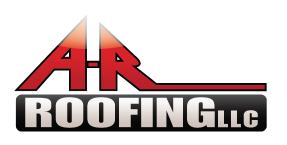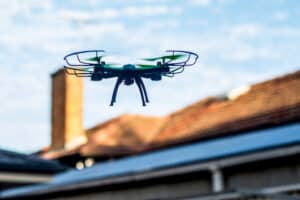As more people embrace solar energy, it's no surprise that both homeowners and business owners…

A Look at Roof Inspection Costs & Process
Homeowners usually consider a roof inspection an afterthought until they see watermarks on their walls and ceilings. At that point, Kansans often ask: How much does a roof inspection cost, and how soon can they schedule one? Truth be told, the average property owner would be well served to have a roof inspection performed every other year, as well as seasonal maintenance.
That being said, a professionally inspected system provides working families with far more than information about whether they need a roof repair or a replacement. The process goes much further, furnishing a detailed report highlighting the strengths, vulnerabilities, and data about the roof’s condition. That information helps everyday people make informed decisions about budgeting for repair costs and saving for a timely roof replacement.
The team at A-R Roofing & Exteriors works diligently with residential and commercial property owners to provide thorough and insightful roof inspections.
CTA: Schedule Your Roof Inspection
How Much Does a Roof Inspection Cost?
A recent article published in Forbes magazine indicates that physical roof inspections typically run between $75 and $600, with the national average hovering around $220. As with most things, it depends on a variety of factors. Below are some of the factors that influence roof inspection cost.
Square Footage
The size of a roof is a baseline consideration that determines how much time a professional roof inspector must invest. A large home or commercial building could be too time-consuming for a single inspector to assess wide-reaching factors in a single day. It’s not uncommon for a roofing professional to bring additional people and resources to complete a big project. Those costs are typically passed along to the property owner or become part of the insurance claim.
Slope and Accessibility
The slope can impact whether a certified roofing professional can get on the roof for a close-up inspection, needs elevation resources, or must rely on advanced technology such as drones to review the asphalt shingles, tiles, panels, or other roofing material. Not every organization has the latest tools and equipment to perform effective inspections. It’s also not unusual for companies to take a pass on steep roofs that pose a safety risk.
Types of Roof Inspection Impact Cost
Currently, there are three primary types of roof inspection available — physical, drone and infrared. The majority of outfits can perform physical roof inspections, as long as the slope isn’t too steep.
People not involved in the roof repair, replacement, or inspection trades are advised to avoid walking on anything steeper than a 6/12 pitch. Experienced professionals can usually handle an 8/12 pitch while following OSHA standards. Physical roof inspections can be performed on steeper pitches with the right elevation and safety equipment.
Drone Inspections
Drone inspections are ideal for assessing large structures and those with excessively steep pitches. The inspector typically uses an app to develop a flight plan before deploying the drone. The operator controls the device remotely, either at the site or from a nearby location. Images or videos are taken of the entire roof or sections that have been specifically damaged. The drone operator may decide to make a second pass and focus on areas that show signs of damage or decline.
Like other types of inspections, the data is analyzed by roofing professionals and placed in a report. This type of roof inspection reduces the time it takes to assess the outer layer, sealants, and other elements. Along with saving time and money, drone inspections eliminate the risk of injury associated with climbing on a roof. According to Forbes, drone inspections generally run from $150 to $400.
Infrared Roofing Inspections
Infrared thermography has emerged as an industry-leading resource for detecting moisture in residential and commercial roofing systems. Water penetration remains the single greatest threat to structures, and your roof is the front line of defense. When moisture infiltrates a roof, it can cause rafters and load-bearing infrastructure to rot. Moisture also spurs the growth of hazardous molds that negatively affect human health.
Infrared roofing inspections look below the surface to identify moisture and problematic areas through thermal imaging. The process allows roofing professionals to see things they could not without removing shingles or cutting into a rubber roof. Considered cost-effective when measured against the detailed data, infrared roofing inspections can run as high as $600.
What Elements of a Roofing System Undergo Inspection?
It’s important to keep in mind that a professional inspection looks at a great deal more than asphalt shingles, panels, and other outer-layer materials. While these facets are thoroughly covered, water damage is often the result of other deficiencies. These are things a roof inspector puts under the microscope.
- Soffits and Fascia: Physical roof inspections are great for getting a close look at soffits and fascia. An inspector can foot a ladder and lean it on a one-story roof line, climb up, and scrutinize these elements. If the soffits and fascia show signs of dampness and rot, prompt roof repairs may be necessary.
- Gutters and Downspouts: Gutters and downspouts play an important role in moving water away from any structure. When they become damaged from high-wind storms, hail strikes, or ice build-ups, water can pool and overflow. Not only does this create water damage to the edge of the roof, fascia, and soffits, but it can also negatively impact exterior walls and foundations.
- Flashing: Damaged flashing allows water to seep into the cracks around chimneys and ventilation pipes. Inspectors check to see if the flashing has become damaged or pulled away.
An essential part of physical roof inspections, attics are among the first places where water penetrations appear. Inspectors usually check rafters, insulation, and the sheathing that supports asphalt shingles. Regular attic inspections are a tried-and-true way to detect roofing problems early.
Schedule a No-Cost Roof Inspection Today
The team at A-R Roofing hopes this information about the roof inspection process and potential cost helps you make an informed decision. We bring more than 25 years of experience to every residential roofing project and provide price-friendly solutions for community members who need roof repairs, maintenance, and replacements. If you are concerned about an aging or leaking roof, contact us today to schedule a free inspection.


